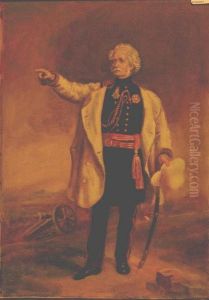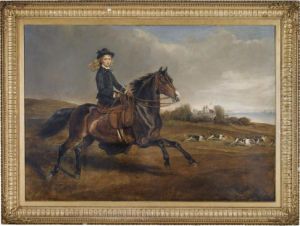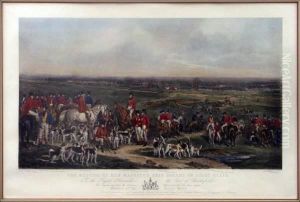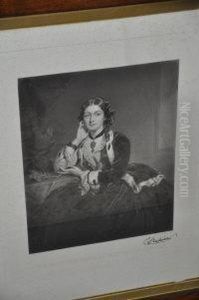Francis Augustus Grant Paintings
Francis Augustus Grant, born in 1839 and deceased in 1913, was a British artist whose life and work spanned the Victorian era into the early 20th century. Though not as widely recognized as some of his contemporaries, Grant's contributions to the art world, particularly in the realm of portraiture and landscape painting, provide a fascinating insight into the stylistic transitions and cultural shifts of his time. Grant's artistic journey reflects a blend of traditional and emerging styles, encapsulating the essence of a period marked by rapid changes in art and society.
Educated in the arts during a time when the Royal Academy dominated the artistic landscape in Britain, Grant was exposed to the rigorous classical training that characterized the era. However, his work also displays influences from the Pre-Raphaelite Brotherhood and the later Impressionist movement, showcasing his adaptability and evolving artistic philosophy. Grant's adoption of impressionistic techniques, particularly in his landscape paintings, marked a significant departure from the more detailed and meticulously composed works of his early career.
Throughout his life, Grant was an active participant in the British art scene, exhibiting at various prestigious venues, including the Royal Academy. His portraits often depicted members of the aristocracy and notable figures of his time, capturing the nuances of their personalities and the opulence of their surroundings with a keen eye for detail and a delicate handling of color and light. These portraits not only cemented his reputation as a skilled painter but also serve as valuable historical documents, offering insights into the fashions, attitudes, and social dynamics of the Victorian and Edwardian periods.
Despite the esteem he enjoyed during his lifetime, Francis Augustus Grant's legacy has been somewhat overshadowed by the more famous names of his era. Nonetheless, his work continues to be appreciated by art historians and collectors for its elegance, technical skill, and the unique perspective it offers on a transformative period in British history. Grant's death in 1913 marked the end of an era, but his paintings remain as lasting testament to the rich tapestry of 19th-century British art.



